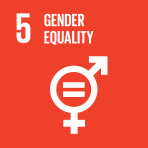Indigenous peoples: Who are they? how many are there? where are they?

- Author: United Nations
- Main Title: Social Panorama of Latin America 2006 , pp 155-176
- Publication Date: August 2007
- DOI: https://doi.org/10.18356/189f9392-en
- Language: English
In view of the international consensus definition of "indigenous peoples" (included in ILO Convention No. 169) and examining different instruments of statistical measurement, especially population censuses, significant changes have occurred in the last few decades. Whereas in the 1980 census round very few Latin American countries of the region included ethnic identity questions, in the 2000 census round they practically all did so, in response to the State obligations. When they were "objects" of policy it was assumed that indigenous peoples could be identified–indirectly and by non–indigenous people– by externally or culturally manifested features, particularly their language. Today, the principle of self–identification is applied, in accordance with their status as subjects of law.
-
From This Site
/content/books/9789211560374s009-c005dcterms_title,dcterms_subject,pub_keyword-contentType:Journal -contentType:Contributor -contentType:Concept -contentType:Institution105



